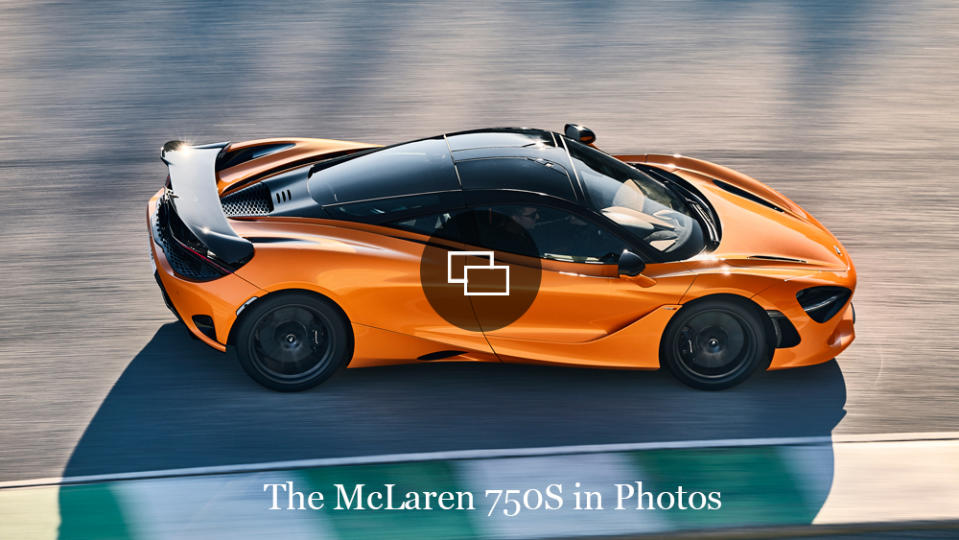McLaren’s New 750S Is One of Its Lightest and Most Powerful Supercars Yet

Six years is a long lifespan for a supercar. The McLaren 720S was launched to a flurry of five-star reviews in 2017, but the Ferrari 296 GTB and Lamborghini Revuelto have since raised the bar for power and performance. There is also new competition from within; the McLaren Artura, which expands the breadth of ability that the 720S was famous for.
Enter the 750S: the lightest and most powerful series-production McLaren ever. It’s also the first vehicle developed under new CEO Michael Leiters, who cut his teeth at Porsche before becoming chief technical officer at Ferrari. “When you have a car recognized by so many drivers as a benchmark, to do something even better you have to examine every detail,” he explains.
More from Robb Report
This Stunning 1989 Lamborghini Countach Is Up for Auction, but Time Is Ticking
Car of the Week: This Iridescent Purple 2021 McLaren Elva Has No Need for Your Windshield
Gordon Murray Automotive Unveils a Sleek Open-Top Version of Its T.33 Supercar
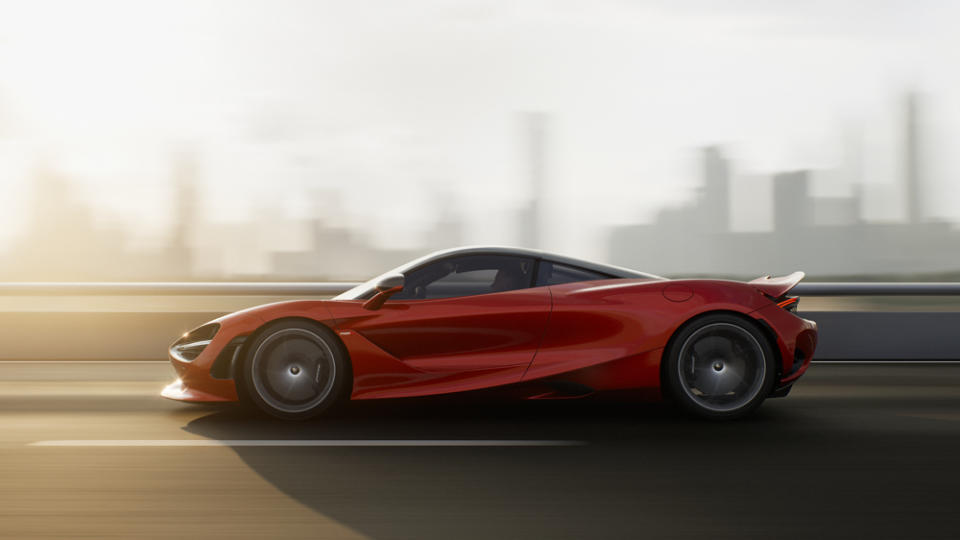
In the McLaren Automotive of old—i.e. the company chaired by Ron Dennis—that might have meant a ruthless pursuit of measurable, objective improvements. Yet while the 750S program undoubtedly involved a few spreadsheets, the focus has also been on driving enjoyment. “Michael [Leiters] had a major hand in this car. He really pushed us on the fun-factor,” explains McLaren’s PR boss Piers Scott. “It offers a level of engagement that you could previously only experience from an LT product,” says Scott, referring to the automaker’s motorsport-inspired “longtail” variants.
What the 750S doesn’t offer, notably, is any of the Artura’s plug-in hybrid tech. “This is unashamedly a car for the internal-combustion-engine purist,” continues Scott. That means a development of the long-serving M840T twin-turbo V-8, with the total output turned up to 750 hp and 590 ft lbs of torque (gains of 30 hp and 22 ft lbs, respectively). A new feature allows the engine revs to be held at the redline when braking and downshifting manually, plus there is a shorter final-drive ratio and a new “lighter and louder” center-exit exhaust, inspired by the McLaren P1.
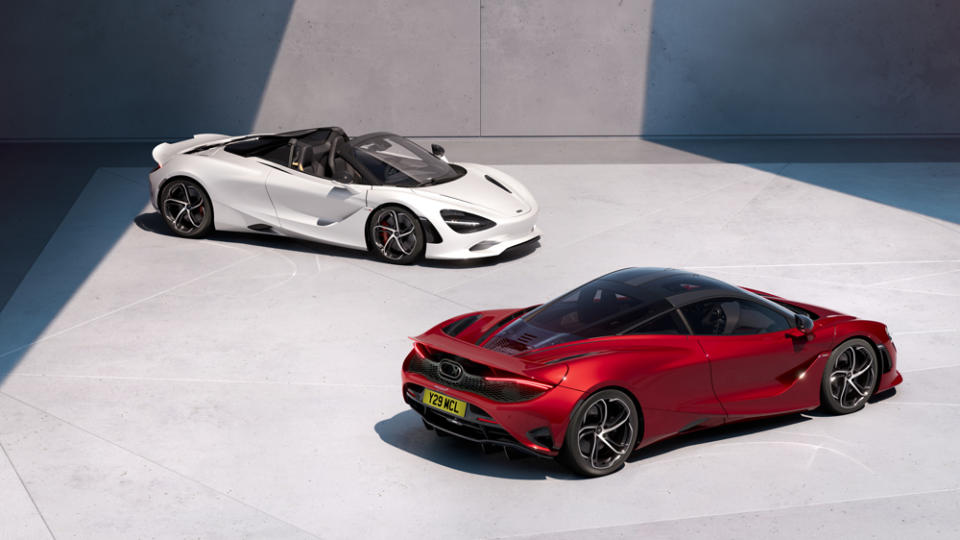
The 750S is clearly outgunned by the car it was benchmarked against: the 819 hp Ferrari 296 GTB. However, a careful diet has shaved 66 pounds from the McLaren’s curb weight (now 3,062 pounds, with a dry weight of 2,815 pounds), giving it a better power-to-weight ratio than its Italian rival. “We’re not in a horsepower race anymore,” says Jamie Corstorphine, McLaren’s director of product planning. And besides, zero to 62 mph in 2.8 seconds, and a quarter-mile time of 10.1 seconds, is plenty impressive.
Like the 720S, the new car is based on McLaren’s ultra-rigid Monocage II-S carbon-fiber chassis, and is available in coupe and spider configurations. The latter version is 108 pounds heavier and 0.2 seconds slower over a quarter-mile, but counters with a retractable hard-top (available with dimmable electrochromic glass) that opens in 11 seconds at speeds of up to 31 mph.
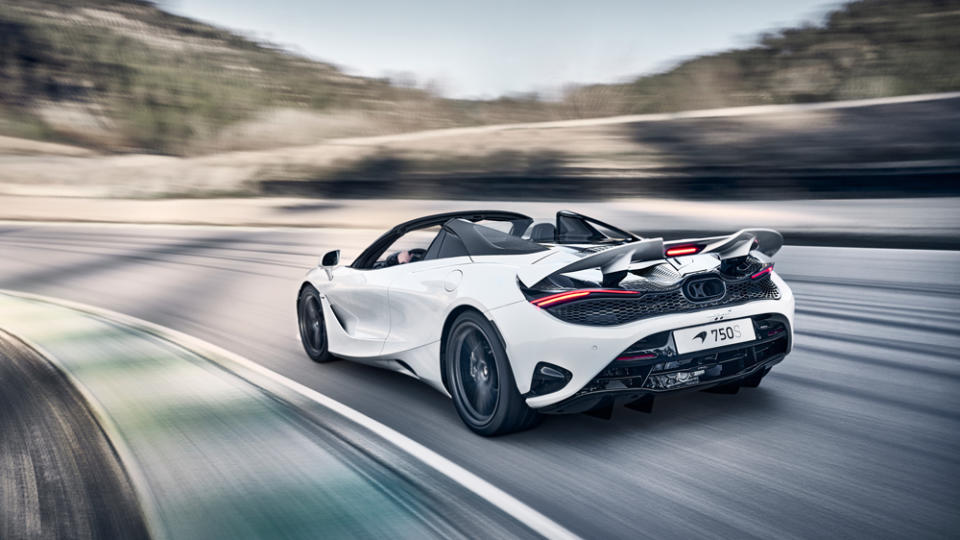
Changes to the bodywork—which comprises aluminum, carbon fiber, and composite—are subtle. That was a conscious decision, in part, to protect residual values of the 720S. Look closely and you’ll spot the narrower headlamp “eye sockets”, extended front splitter, new bumpers, and a longer pop-up rear spoiler. “It does have more downforce than a 720S, although our main focus was on better balance,” says chief engineer Sandy Holford. And the slash-cut front-fender vents of the 765LT are now available as an option.
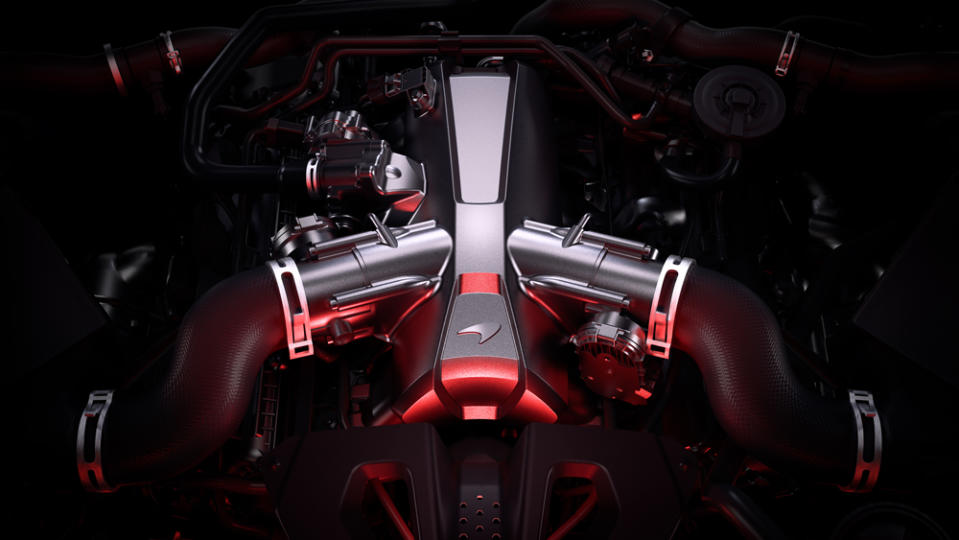
Inside, the McLaren has received a much-needed makeover from that of the 720S. Instead of an “Active” panel on the center console, there are Artura-style toggles—located on either side of the instrument binnacle, within fingertip-reach of the steering wheel—for adjusting the drive modes. Alternatively, a new button called MCL (McLaren Control Launcher) offers one-touch activation of all the driver’s preferred handling, engine, transmission, and aero settings. There’s also a new touchscreen media system with Apple CarPlay connectivity for the first time. And we’re told that Android Auto is coming soon.
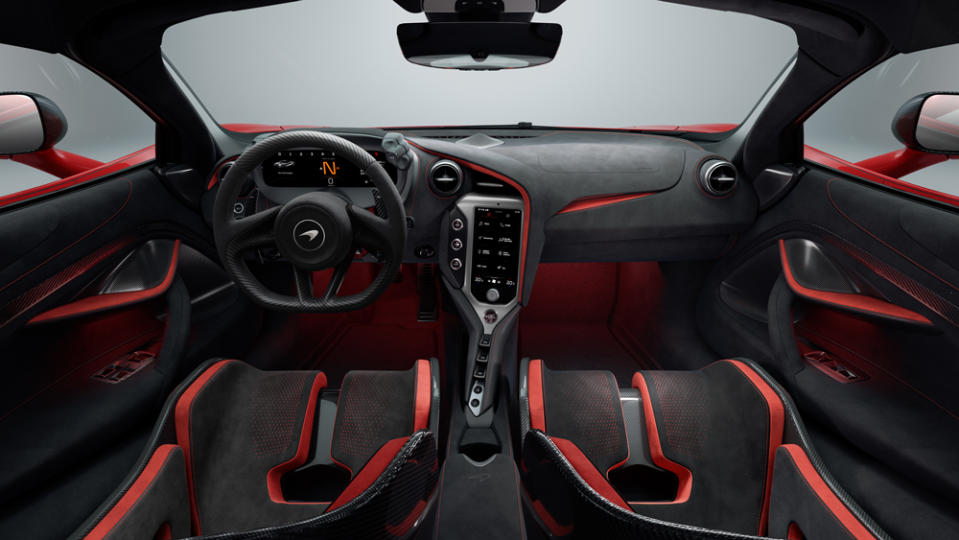
The 750S uses the latest generation of McLaren’s interlinked hydraulic suspension, featuring revised geometry and new lightweight springs and dampers: now three percent softer at the front and four percent stiffer at the rear. Combined with a 0.2-inch-wider front track, the result is more grip, better body control, and improved steering feedback, according to Corstorphine, who says, “’connection’ and ‘confidence’ were two of our watchwords for this car”.
Speaking of steering, the 750S retains hydraulic assistance—to a collective sigh of relief from the McLaren faithful—albeit with a quicker ratio and a new pump to reduce bump-steer. “We will resist electric steering as long as we possibly can,” says Ben Gulliver, McLaren’s head of vehicle development, while acknowledging that legal requirements for self-steering systems may eventually make the change inevitable.
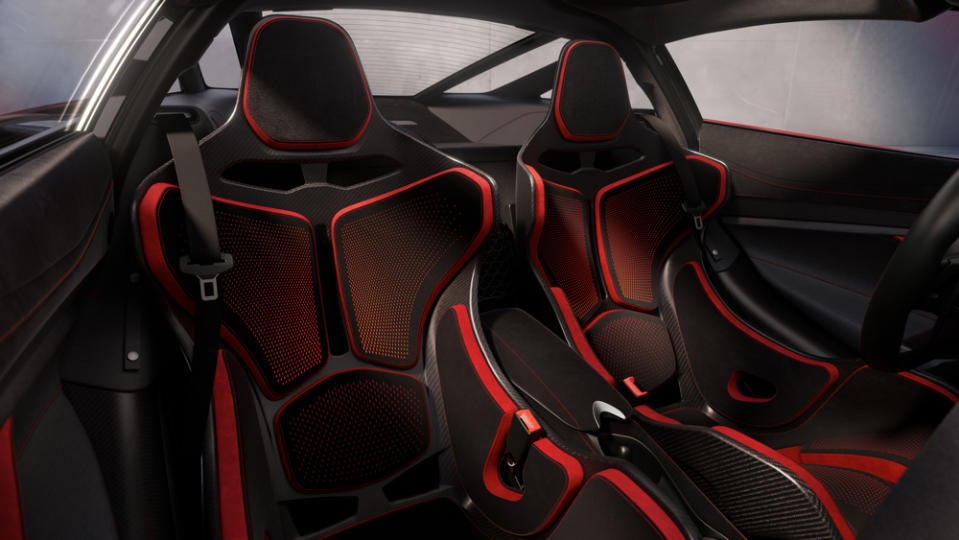
Like any supercar, the 750S is available with an array of options, including one-off personalization via McLaren Special Operations (MSO). A new track-focused brake upgrade, derived from the McLaren Senna, combines ceramic discs and monobloc calipers, and you can also specify the Senna’s sparsely padded carbon racing seats, which save a combined 39.2 pounds. We’d be tempted by the upgraded Bowers & Wilkins audio system, too.
The 750S sits above the Artura and GT in McLaren’s lineup, and it’s expected to account for a third of the automaker’s global production, with the US as its biggest market. Expect a price rise of around 10 percent versus the 720S (reckon on about $340,000) when the first cars reach showrooms in Q4 of 2023.
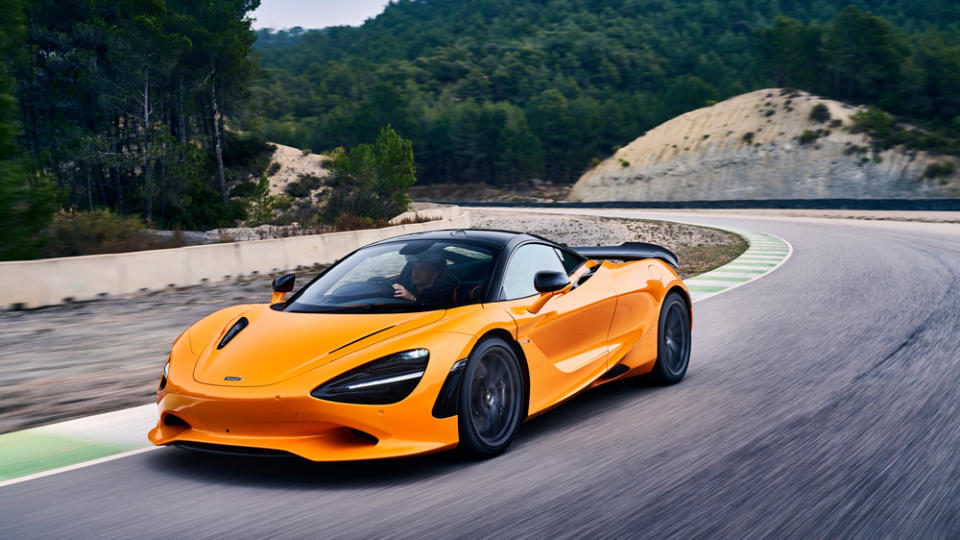
How will it drive? Despite not having the Artura’s ability to switch into electric mode, the 750S offers huge bandwidth, according to Holford: “The 765LT demanded some trade-offs in terms of everyday usability. This car does not. It’s just so much fun.” Here’s hoping for a new supercar benchmark, then. We’ll find out in September.
Click here for more photos of the new McLaren 750S.
Ready to start summer in high gear? There’s still time to join Robb Report’s 2023 California Coastal Rally, June 4 through 8. For more information, or to register, visit here.
Best of Robb Report
Sign up for Robb Report's Newsletter. For the latest news, follow us on Facebook, Twitter, and Instagram.
